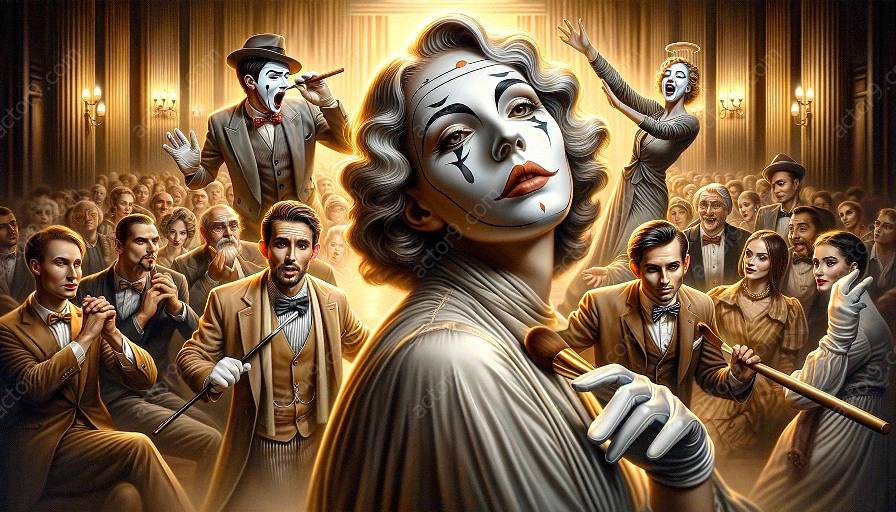When it comes to performing arts, the art of theatrical expression and artistic interpretation in mime and physical comedy holds a unique place. This topic cluster delves into the fascinating world of mime and physical comedy, exploring the history, techniques, and impact of these art forms. Additionally, it highlights the contributions of famous mime artists and physical comedians who have left an indelible mark on the world of performing arts.
Understanding Mime and Physical Comedy
Mime and physical comedy are forms of performance that rely on non-verbal communication, body movements, and facial expressions to convey stories, emotions, and ideas. Both art forms have a rich history that dates back centuries, and they continue to captivate audiences with their distinctive appeal.
The History of Mime and Physical Comedy
The roots of mime can be traced back to ancient Greece, where performers used gestures, facial expressions, and body language to entertain and communicate with audiences. Throughout history, mime has evolved, drawing inspiration from various cultures and traditions.
Physical comedy, on the other hand, has its origins in the tradition of clowning and slapstick humor. Comedians have long relied on exaggerated movements, acrobatics, and visual gags to elicit laughter and connect with their audience.
Techniques and Performances
The art of mime requires precision in movement and expression, with performers often using pantomime techniques to create illusions and tell stories without words. Meanwhile, physical comedy involves mastering the timing and physicality of humor, incorporating elements of slapstick, pratfalls, and visual comedy.
Both mime and physical comedy demand a high level of physical skill and expressiveness, making them a challenging yet rewarding form of artistic expression.
Famous Mime Artists and Physical Comedians
Several iconic figures have significantly influenced the world of mime and physical comedy with their innovative performances and distinctive styles.
Marcel Marceau
Marcel Marceau, often hailed as the greatest mime artist of the 20th century, mesmerized audiences with his silent performances. His character Bip, adorned with a striped shirt and a battered hat, became synonymous with the art of mime, and his contribution to the art form remains unparalleled.
Charlie Chaplin
Charlie Chaplin, known for his iconic persona of the Tramp, transcended the boundaries of silent film to become a global symbol of physical comedy. His expressive use of body language and comedic timing continues to inspire performers to this day.
Buster Keaton
Buster Keaton, renowned for his deadpan expression and acrobatic stunts, epitomized the art of physical comedy in the era of silent films. His daring feats and comedic brilliance cemented his status as a legendary figure in the realm of physical comedy.
The Impact of Mime and Physical Comedy
Both mime and physical comedy have made a lasting impression on the performing arts scene, influencing various entertainment genres and inspiring future generations of performers. Their ability to transcend language barriers and connect with audiences on a universal level makes them powerful tools for artistic expression and storytelling.
Contemporary Applications
Today, mime and physical comedy continue to thrive, finding resonance in modern entertainment through stage performances, film, television, and even street art. Their timeless appeal and ability to evoke emotions and laughter ensure that they remain relevant in the ever-changing landscape of performing arts.
With their capacity to convey profound narratives and provoke laughter without uttering a single word, mime and physical comedy hold an enduring allure that will continue to captivate audiences and inspire new generations of artists.


























